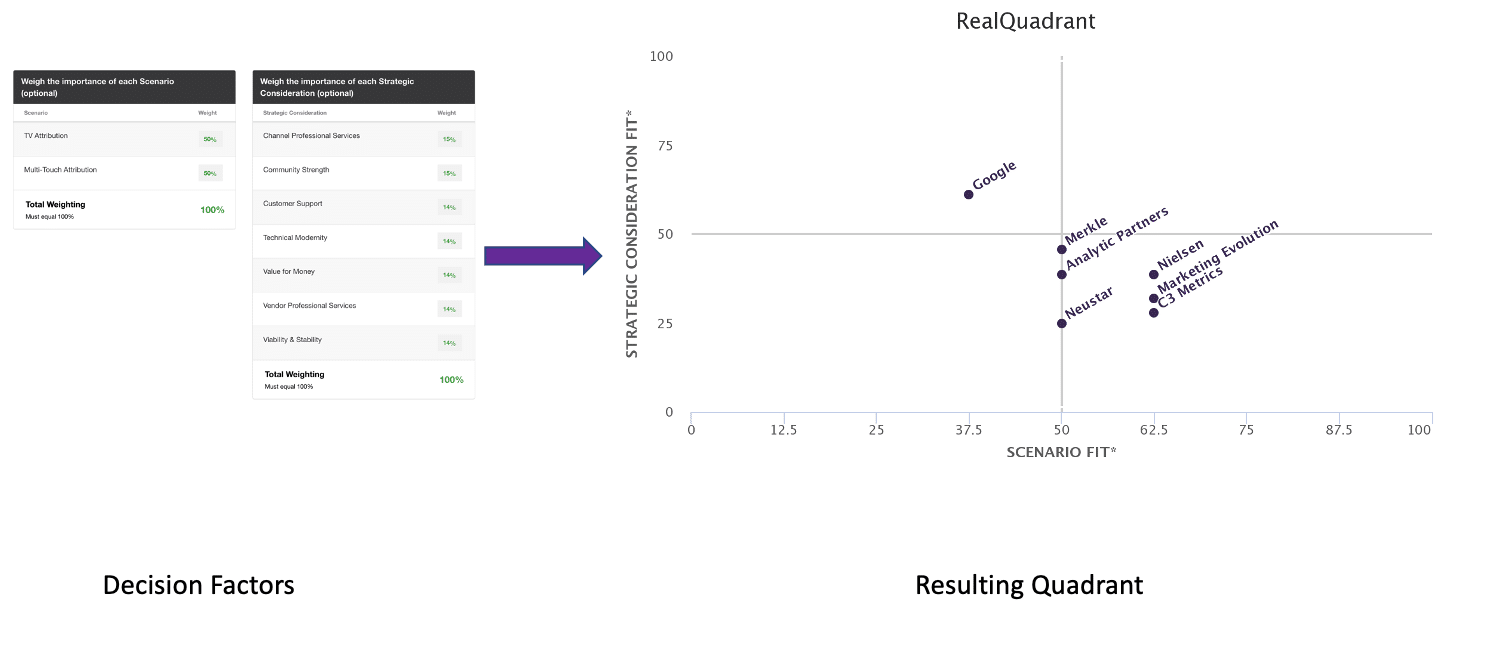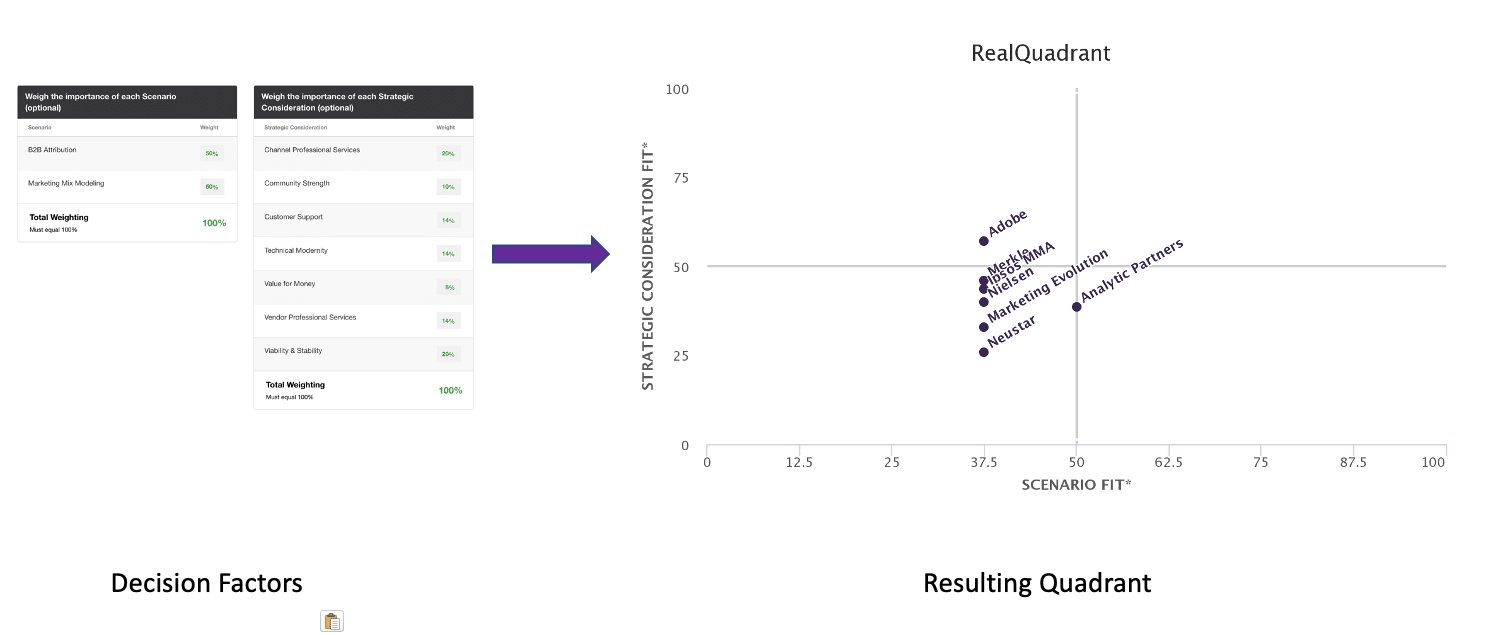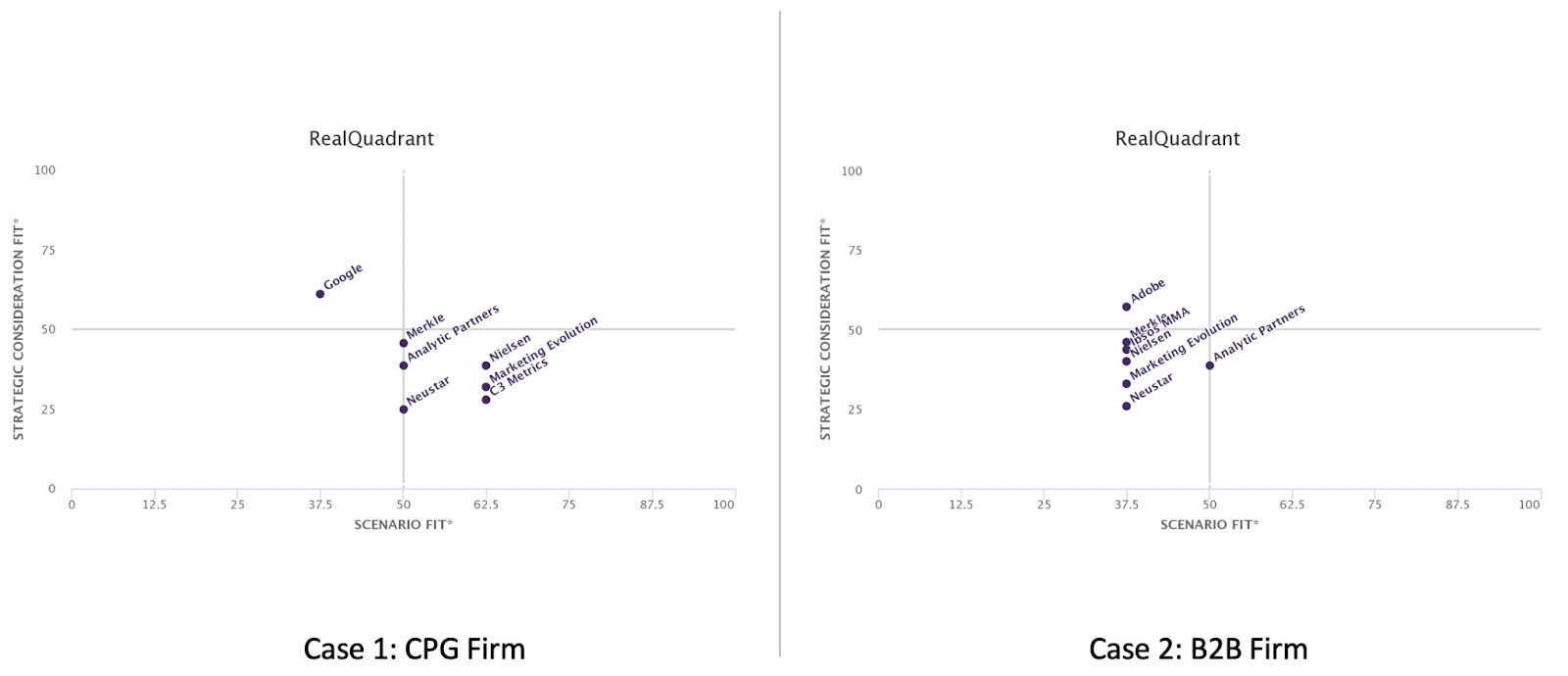When taking a look at martech distributors and marketplaces, we’ve gotten used to quadrants. They supply a easy visible to plot key gamers in an business — virtually like a horse race.
At a time when most expertise marketplaces have a whole bunch of merchandise — every claiming to be a pacesetter — such a graphic will help simplify making a shortlist of distributors to discover once you begin your analysis journey.
Nonetheless, there are a number of issues with the favored quadrant-based shortlisting approaches, and I’ve seen many massive enterprises make poor choices primarily based on them.
Totally different necessities however single quadrant?
Each enterprise is completely different. For martech particularly, we’ve discovered that buyer maturity, wants, emphasis, capabilities, budgets, architectures, incumbent environments and priorities will differ, together with throughout enterprises inside a single business.
Through the years, we’ve got observed that — no matter what distributors declare — they don’t seem to be all the time equally good at addressing all enterprise use circumstances. Furthermore, every group desires to unravel completely different use circumstances. Due to this fact, what’s match for one group might not be match for an additional.
Nonetheless, distributors and their business analysts typically disregard these variations and have a tendency to assume that almost all and even all buyer necessities resemble one another. As a consequence of this misperception, distributors typically declare their platforms can clear up various kinds of necessities equally properly. Analysts develop two-dimensional quadrants with generic winners and losers as if it have been a horse race.
However martech choices will not be a race; the truth is far completely different. Think about the next:
- Conventional analyst quadrants have a tendency to cover greater than they present. For instance, a buyer might by no means know why one vendor received positioned at (x, y) and one other one at (x1, y1).
- Static quadrants typically embody solely a small subset of an total market and infrequently miss out on extremely appropriate candidates. Many mature marketplaces, corresponding to WCM and DAM, have many distributors. You’ll be able to typically discover stable regional distributors and functionally specialised distributors. For those who use a static Quadrant with 8-10 distributors, you might be prone to miss out on distributors who might supply a greater match for you.
- A minimum of a few of the distributors on the quadrants are additionally prospects of quadrant-makers. So there’s a transparent battle of curiosity there.
- Static quadrants assume generic winners and losers when the important thing consideration right here is vendor match in your particular circumstances.
That final downside is maybe essentially the most pernicious, and I’ve seen many enterprises overbuy or in any other case take a look at the flawed distributors in consequence. Let’s discover another method the place your particular necessities and sense for strategic trade-offs actually matter.
Dig deeper: 6 issues martech distributors don’t need you to know
Shortlisting primarily based on vendor match
For illustration functions, let’s take a look at the advertising and marketing attribution market, the place we critically consider ten distributors.
For advertising and marketing attribution, most enterprise wants fall inside 5 archetypal eventualities:
- Advertising and marketing combine modeling.
- Multi-touch attribution.
- TV attribution.
- B2B attribution.
- Omnichannel attribution.
Nearly each a type of ten distributors will declare they’ll deal with all of those eventualities. In actuality, although, we’ve got discovered that almost all distributors are good at just one or two of the above.
As well as, a number of strategic elements about distributors are equally, if no more, necessary than the product itself. These embody channels and vendor skilled companies, their technique, what’s on the roadmap, technical assist, and so forth.
For example, Product X has all of the options that you just require, however it doesn’t present any skilled companies in your geography. Does it even make sense to have it in your shortlist? Maybe so, however it’s best to perceive the implications.
Let’s then take a look at how these elements come into play utilizing two examples.
Case 1: An FMCG agency
This hypothetical fast-moving shopper items (FMCG) agency desires to handle the next two eventualities. They assume each these eventualities are equally necessary to them:
- TV attribution.
- Multi-touch attribution (MTA).
They’ve additionally listed the next strategic elements necessary (all equally necessary) to them:
- Channel skilled companies.
- Group power.
- Buyer assist.
- Technical modernity.
- Worth for cash.
- Vendor skilled companies.
- Viability and stability.
Primarily based on these inputs, their shortlist seems as beneath:

Case 2: A B2B tools manufacturing agency
This hypothetical B2B agency desires to handle the next two eventualities:
- B2B attribution.
- Advertising and marketing combine modeling.
They take into account each of those eventualities as equally necessary to them. Discover that they don’t take into account the opposite eventualities related to them.
They’ve additionally listed the next strategic elements necessary to them. Whereas elements are related, they’ve given completely different weights to “viability and stability” and “channel skilled companies.”
- Channel skilled companies.
- Group power.
- Buyer assist.
- Technical modernity.
- Worth for cash.
- Vendor skilled companies.
- Viability and stability.
Primarily based on these inputs, their shortlist seems as follows:

Discover that the quadrants generated resulting from particular necessities and strategic concerns are very completely different. Not solely will you discover completely different distributors on the quadrants (Google and C2 Metrics in case 1 vs. Adobe and Ipsos MMA in case 2), however their relative positions additionally differ primarily based on their relative strengths.

Dig deeper: How to decide on the best martech companion: 6 sensible ideas
What do you have to do?
Distributors will all the time declare broad applicability for his or her platforms. Nonetheless, since software program growth is all about trade-offs, every platform (and vendor) will inevitably carry sure strengths by way of what they’ll do greatest.
For instance, within the advertising and marketing attribution market, some platforms can do media-mix modeling higher than others, whereas others might be higher at B2B attribution.
Due to this fact, the bottom line is to:
- Align round and prioritize canonical eventualities.
- Prioritize strategic concerns.
Bear in mind, your necessities or mixture of necessities will virtually all the time differ. It’s possible you’ll search an identical set of performance, however there are all the time variations in how you’ll deploy that performance. That’s why it’s essential to get out of a horserace mentality and step up a stage to deal with enterprise use circumstances quite than a laundry listing of guidelines necessities.
Dig deeper: A sensible information to constructing a advertising and marketing expertise stack
Get MarTech! Each day. Free. In your inbox.
See phrases.
perform getCookie(cname) {
let title = cname + “=”;
let decodedCookie = decodeURIComponent(doc.cookie);
let ca = decodedCookie.break up(‘;’);
for(let i = 0; i <ca.size; i++) {
let c = ca[i];
whereas (c.charAt(0) == ' ') {
c = c.substring(1);
}
if (c.indexOf(title) == 0) {
return c.substring(title.size, c.size);
}
}
return "";
}
doc.getElementById('munchkinCookieInline').worth = getCookie('_mkto_trk');
The put up Past quadrants: An alternate method to martech choice appeared first on MarTech.
